Sweat-valgus foot-Patatology The most common children's orthopedic.Usually she meets in the first years of the child's life because she becomes clear as the child begins to master independent walking.What to do if such curvature is found, we will show in this article.
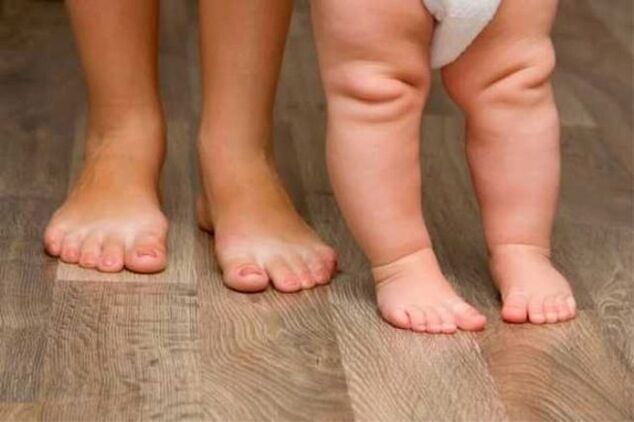
What is valgus deformity
In fact, valgus deformity and flat feet are different pathologies of the lower extremities, but in children it is more often that a combination of a decrease in the arc of the feet, characteristic of flat feet, and a change in the position of the foot with an oral displacement, characteristic of valgus deformity, is most often observed.
Valgus bending is such a deformation in which the child in a straight position is mainly based on the inner part of the legs, and the fingers and heels are placed in the outer direction.
Normally, the foot placement should be parallel, that is, when looking at two legs standing back, you can mentally draw two straight vertical lines.In a child with valgus deformities, these lines are refracted in the ankle node area with a deviation on the outside, which determines the second name of deformation of the pathology-x form.
With flat feet, everything is much more complicated.All children from birth have a flat physiological leg, so it is impossible to consider this a pathology in 1-2 years.However, orthopedists consider the problem comprehensively, and a deformity of the diagnosis-exploit-valgus appears in the child's medical data in medical data.
Enough is quite rare, but valgus bending may be congenital.For some reason, the lower limbs of the fetus in the abdomen begin to develop abnormally.Such legs are visible almost immediately after the baby is born, and in 2-3 months the diagnosis usually becomes quite reasonable.
A flat flat foot is not a sentence.With timely treatment, with a responsible and systematic approach to her parents, foot function in the event of mild pathology can be fully restored.It all depends on the degree of the disease.
Flat - deformity of the leg valgus - how to correct the defect?
Installation of valgus of prohibition valgus - an orthopedic abnormality, which is characterized by changes in deformation in the foot, which is found in adults and children.
The deformation is a violation of the surface of the foot, when its middle part is moved down, and the fingers and heels are turned out.
The reason for the abnormal foot development lies in the weakness of the ligaments, muscles and tendons, when the foot is withdrawn from them under the influence of stronger muscles.The result of this effect is the formation of flat feet.
Deformation of foot plans is essentially the same flat foot, a very common defect found in every fifteenth inhabitant of the planet.The disease is difficult to treat, and the treatment process itself is long and problematic.
The reasons for developing pathology
During evolution, our foot was formed in such a way as to take over and evenly distribute the weight of the human body.The role of the foot is to ensure greater depreciation while walking, jogging and dancing.
Moreover, thanks to the unique anatomical structure of the foot, a person goes in a straight position, without falling to the right - left, back and forth.Prolonged foot vaults are directed in two directions: transverse and longitudinal.
So an adult has three points in support:
- the element of large bone plus;
- Heel Hillock;
- Fifth bone plus.
Pathology occurs in young women much more often, as they wear high behavior shoes.Visually, the legs with such deformation resemble the letter "X".At the same time, bone and pile fingers are directed in one direction (out), and the middle part of the foot moves down.
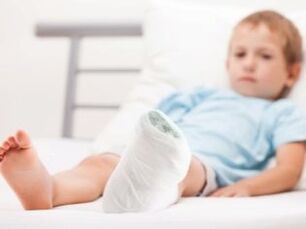
Thus, the development of deformation contributes to:
- the weakness of the ligamentous apparatus;
- Connective tissue diseases;
- Weight (with overweight, create an additional foot load, which leads to their deformity);
- Wearing unpleasant shoes with high behavior.
Classification of pathology
Depending on the shape of the bending of the foot, the pathology can be of three types:
- transverse;
- longitudinal;
- Combined.
The longitudinal installation of the foot is the honor of the longitudinal arch of the foot.If at the same time there is a breach of walking;Pain during walking and palpation, and deformation changes are also visually observed, we can talk about longitudinal foot deformity.
Transverse deformation is characterized by a specific type of foot - it looks visually flattened.At the same time, the tendons of the fingers are stretched unnaturally, and bending has a hammer.Patients complain of pain when walking and walking violations.
Combined foot installation combines signs of both transverse and longitudinal abnormality and is called transversely flat longitudinal legs.Despite this, there is no different pain and annoyance.
The deformations are classified as follows:
- Spastic - arise after muscle cramps;
- Rakitic development as a result of d-hypovitaminosis;
- Structural - abnormal adjustment of the molten bone;
- paralytic - a consequence of polio;
- Hyper -correctional - presented as a result of the unsuccessful correction of the clubfoot;
- Statistical - with the development of scoliosis and behavioral disorders;
- Compensatory - a defect in the development of the Achilles tendon, in which the bones move inside;
- Traumatic - develop as a result of damage, bruise, displacements and fractures;
Symptoms
As mentioned above, the flat deformation -Valgus develops against the background of flat congenital legs.Symptoms of the disease depend on which part of the foot underwent bending.
For example, equal deformation develops due to a variable foot or equinator.It can be the result of fibula pathology.The disease is characterized by muscle paralysis of both legs and lower leg.
In the presence of a "bump", the symptoms will appear as follows:
- Bones can become inflamed, swell and get sick;
- The thumb shines from the inside, while the same fate is overcome by the other fingers, they will also deform and blow in the form of hammers;
- It is impossible to wear tight, and sometimes even comfortable shoes or soles;
- Very often, patients with such a pathology wear shoes some more sizes;
- Bending of the thumb prevents the normal position of the other fingers, they strangely bend and also bend;
- Prolonged walking causes pain and weight in the leg;
- There is corn and corn in the sole.
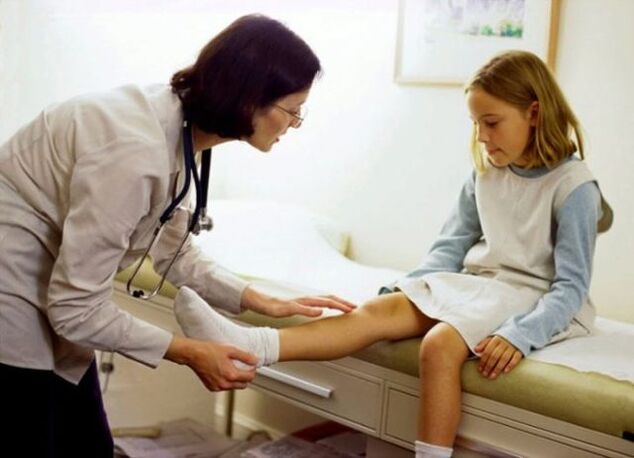
The treatment of pathology
It should be said immediately that the diagnosis of flat valgus legs involves a very long and complex treatment, which takes a long time.It is important to diagnose the disease as soon as possible and begin adequate treatment.Time in this case works against the patient, as timely treatment is given hope for the rapid elimination of the disease.
Valgus Flatfoot treatment includes;
- Physical medical education, which aims to correct the shape of the foot and strengthen the muscles;
- physiotherapeutic procedures;
- wearing orthopedic, bedding, supervisor shoes;
- the use of orthopedic orthosis, decay and other evidence;
- Regular massage of the lower extremities and the lumbosakral site - krysovo - gluteal.
Planealgate tracks in children
It should be noted immediately that all of the above refer to an adult with the presence of this pathology, but in young children everything is different.
Almost all children were born with flat feet, and it is clear why.After all, their feet at that time did not suffer loads and they only take the first steps when setting up.
Of course, during this period they put their feet wrong because they do not know how to walk.
Therefore, it is worth distinguishing the functional flattening of the foot and anatomical safe.Physiological clothes are just a phase of orthopedic development of the lower extremities and is the norm.
With sufficient loads (when walking on uneven surfaces), deformation of the child is quickly adjusted.This usually happens with three years.In addition, up to three years in the single part of the child, there is a natural fat layer that covers the arc of the foot.
You can only see it if you put the baby in the socks.
The arc formation process is long, it takes several years.Therefore, talking about anatomically formed foot is not earlier than five years old.However, all children are different, so this process is formed earlier, and for someone later.
It depends on how physically and healthy child is developed, whether he has deviations from the development of the bone muscle system, violations from the endocrine and nervous system.
But, unfortunately, there are times when flat feet become a noticeable pathology.
In the risk group, children who in the first year of life were diagnosed with violations in the development of the muscular system, a decrease in muscle tone, a delay in psychomotor development and overweight.The consequence of such violations will be flat deformity of the legs.
Deviation of the angle of toes from the axis of the children's orthopedists is measured on the scale.In this case, the body weight of the body is unevenly dispersed in the foot and experiences a certain part of the foot of the larger load.In this case, it is the inner edge of the foot, where the longitudinal safe should be formed.Therefore, therapists call this plane -Valgus pathology.
Massage
Massage is the main method of treatment in complex therapy.It helps to relax the bone muscle system, improve blood circulation and trophic muscle apparatus.The baby's feet are massage in the following sequence:
- Immediately before the massage begins, the legs are hitting;
- Ijet and knees are also treated with slight strokes;
- The posterior surface muscles with surface pressure are cooked;
- rub the muscles;
- Performing the baby's feet with a palm;
- Perform the final blow.
The general massage also begins with strokes, which increase the blood flow to the baby's limbs.The movements are performed from the heel to a popliteal fossa.During massage, the emphasis is dedicated to muscle relaxation, the child does not need to grind.
If in some areas it is necessary to make some energetic friction, then they should be at the same time light and energetic.Care are performed with fingers.The main emphasis is on stroke and swing.
Physical education
Gymnastic exercises to treat flat feet are performed in a medicinal rug, which must have an uneven surface (relief).Performing exercises in such a rug, at the same time there is a mechanical foot massage.Exercises are suitable for children aged two or three years.
Carpet exercises:
- drawing from one foot to another, transferring body weight;
- standing on one foot, other sliding movements along the carpets;
- Placing hands on the strap, make circular movements with the body on one or the other;
- Put one foot in front of the other, then create socks and sit on the heel;
- Rely on the heel with one foot, and the other on the toe, at the same time make the foot roll from the toe to the heel;
- Walking into the carpet resting on the outer edge of the foot.
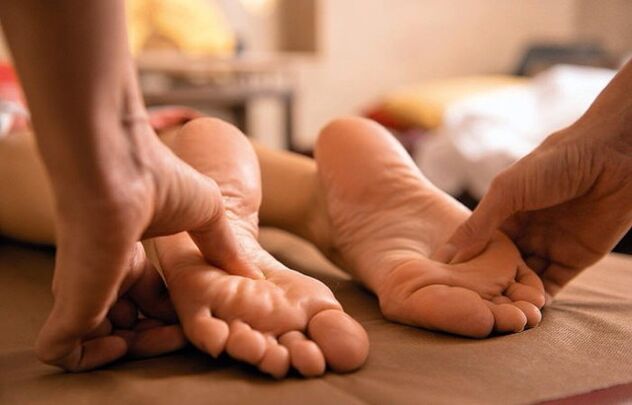
Surgical treatment
Surgical treatment for the purpose of correcting flat feet is extremely rare.Excess of foot safes are made according to the ash method.The defect has also been corrected in adolescence, however, the arthrodesis technique is used, in which they perform a phase of the bones of the foot to correct the safe.
The most effective option is the surgical correction of a defect in a child of 4-5 years with flat feet.At this age, rapid restoration of ligaments and joints occurs, as well as bone repositioning gives the best result.
Selection of shoes
Equin-valgus leg deformation is eliminated using correctly selected shoes.It is very important that the support from the bottom and lateral part of the foot will turn out to be.For treatment, orthopedic shoes are chosen to individual standards.It allows the muscles to function normally and evenly distribute the load on the foot.Pediatrics are very useful from wearing special shoes:
- Lowering the load on the muscle -Skeletor system,
- Negative consequences of deformation is eliminated,
- Normal behavior and walking are formed,
- Muscles and ligamentous apparatus are developing properly.
Consequences
If you do not find a flat valgus foot in children on time, then in the future there will be serious complications that can cause disability.First of all, an incorrect walk is produced, as a result of which the knee structure and hip joint are disturbed.Then the spine is curved, which suppresses the internal organs and does not allow them to function normally.
Forecasting and prevention
Early treatment allows you to completely get rid of the flat-valgus foot.In advanced cases, in adolescence, the child will show problems with the spine.
It is possible to prevent such a violation by committing simple gymnastics daily.Do not try to put the baby standing if it is less than 9 months old.It is worth avoiding the overload of the child's skeletal muscle system.
Practical advice
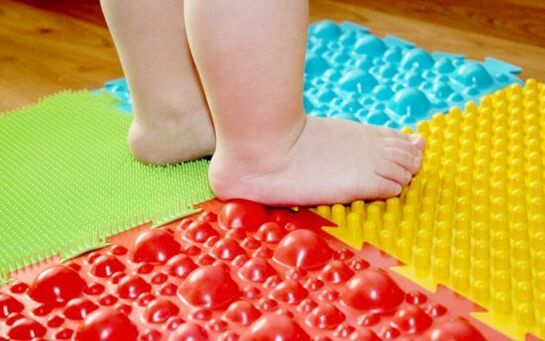
As statistics show, about 40% of children with a staircase of flat feet are discovered annually during the preventive examinations of school students.Most of them are girls.Such a spread is due to the fact that the early stages of the valgus often pass unnoticed.
Prevention of flat feet is especially important in school years when the child is growing intensely.
The crucial period is from 3 to 7 years: it is at this time that the shoes are well fixed to adjust the foot and correspond to the size.
Do not buy expensive orthopedic shoes if the diagnosis is not yet made or the doctor has not given such a recommendation.In some cases, additional foot support can give the opposite result.























